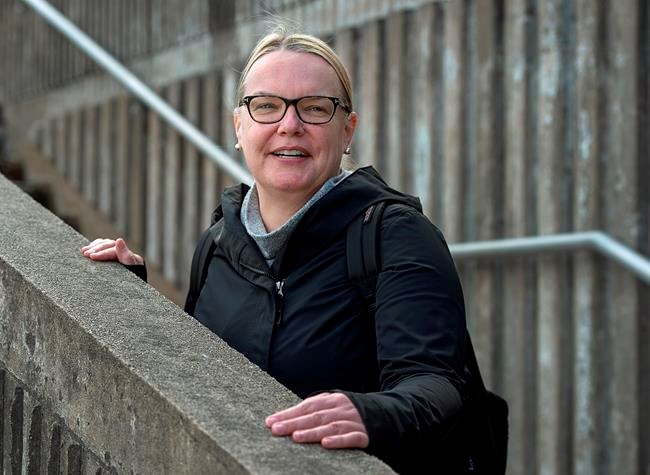HALIFAX — As Canadian universities begin an unprecedented shift toward online classes, Nicole Mensour is experiencing the challenges the sudden plunge into digital learning creates for students.
"To be honest, it is a bit overwhelming," said Mensour, a bachelor of education student at Mount Saint Vincent University — who also has a teenaged daughter and son to look after at her Halifax home.
As COVID-19 is leading to the closure of campuses, the 48-year-old student is faced with a deluge of emails on how to use online forums for six courses, while she prepares to spend hours viewing online lectures and learns to upload her voiceover for a powerpoint presentation.
"Some classmates were scheduled to make presentations and had to make the shift (to online) over the weekend," she said, adding that professors have been flexible with deadlines and are also coping with uncharted territory.
"This is challenging for everybody," she said.
Universities Canada, the national association of universities, said Monday the plan for most universities is to transition to online formats, with some starting immediately, others by mid-week and still others putting classes on pause until next Monday to work out logistics. Many high schools have similar plans.
Shannon Davis, a master of education student at Mount Saint Vincent University, said some professors with online teaching experience are providing courses that students can pursue on their own time.
However, there are also classes where she's expected to attend lengthy lectures in real time — a prospect the international student isn't relishing.
"People have children, they're going to be back into their own lives and yet being asked to be logged on at the same time," she said in an interview.
In the evenings, when her mother, nephew and sister are at home, high speed internet access may also be a challenge. "I'd rather be able to work when they're not there," she said.
Amelie Lemieux, an assistant professor in education who researches digital literacy, says professors around Canada should consider — if possible — breaking out of traditional teaching formats in the weeks to come.
"Face-to-face learning is not the same thing as online learning," the Mount Saint Vincent University professor said in an interview.
"I'd recommend that in most instances lectures not be in real time, because people are going to be at home with their kids and their parents and their pets."
Lemieux also says it's important that teachers are very clear with students about changes in assessment methods, provide clear guidelines on how to use technology and allow students to try out unfamiliar technology well in advance of deadlines.
"Spend time with them, and run through those things with them," she said.
There should be frequent breaks from lectures to allow students to interact online and remain engaged, she suggests.
In Canada, there are two fully online, distance education universities, Athabaska University and TELUQ University, while most other campuses have used digital education as a way to extend their existing offerings.
Thierry Karsenti, a Universite de Montreal professor in information and communication technologies, says the sudden arrival of online teaching for all of a student's courses is a major shift.
"Are teachers prepared? No," he said in an interview.
"But when you're facing challenges, it's one way to learn. It's a good time to learn and to overcome these challenges."
Karsenti, the Canada research chair on communication technologies in education, has just published a list of nine free tools for online teaching that he says any teacher can use to provide their courses online. The Society for Teaching and Learning in Higher Education has also created a website to help professors move online.
While about one third of North American university students have taken at least one online course, it's rare to have a full suite of courses online, as some universities are now permitting, the Montreal professor said.
The sudden push for online education presents the potential for a huge leap forward in online education, while highlighting some shortfalls in the system, Karsenti said.
He notes that Wi-Fi access remains poor in some parts of rural Canada, and about 6.5 per cent of Canadians report they don't have access to the internet at home.
"Many students rely on their (smart phone) data plan for internet. That's not ideal for long periods," Karsenti said. "Providers across Canada should help by increasing ... the data students can use at this time."
However, at the end of the pandemic, Canadians may have advanced further into online education — and this may be viewed as one of the positives in an otherwise trying time, he added.
This report by The Canadian Press was first published March 16, 2020.
Michael Tutton, The Canadian Press



